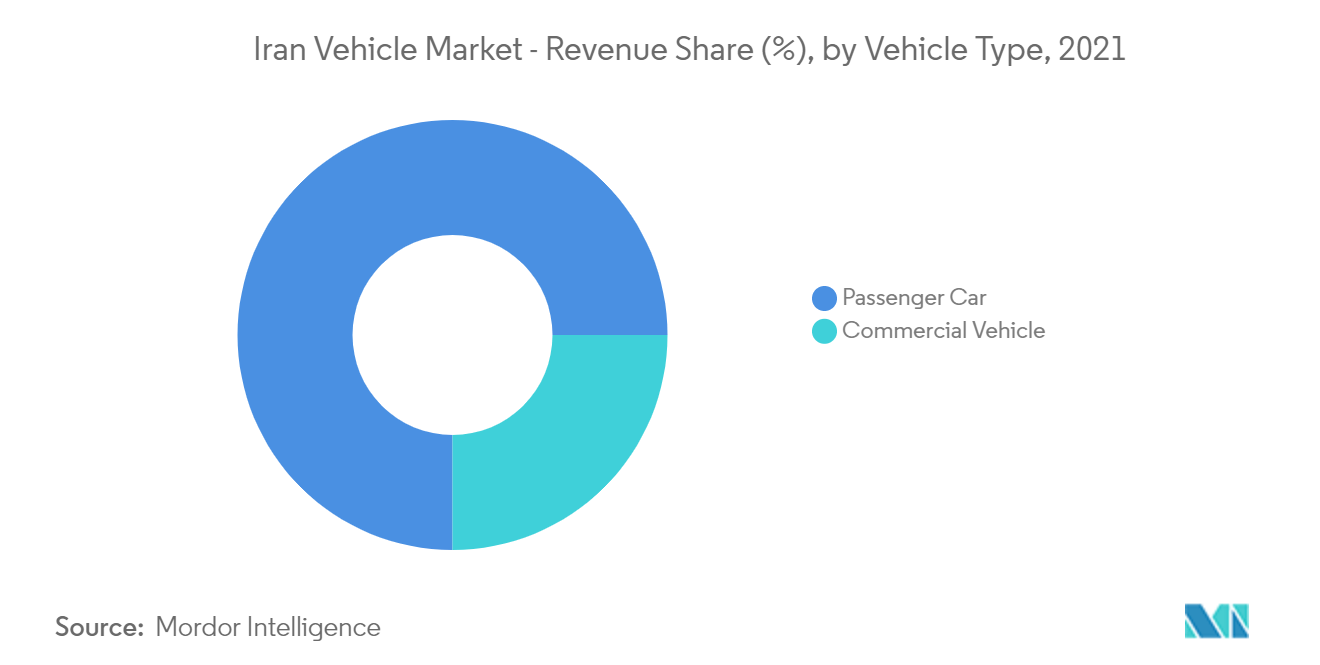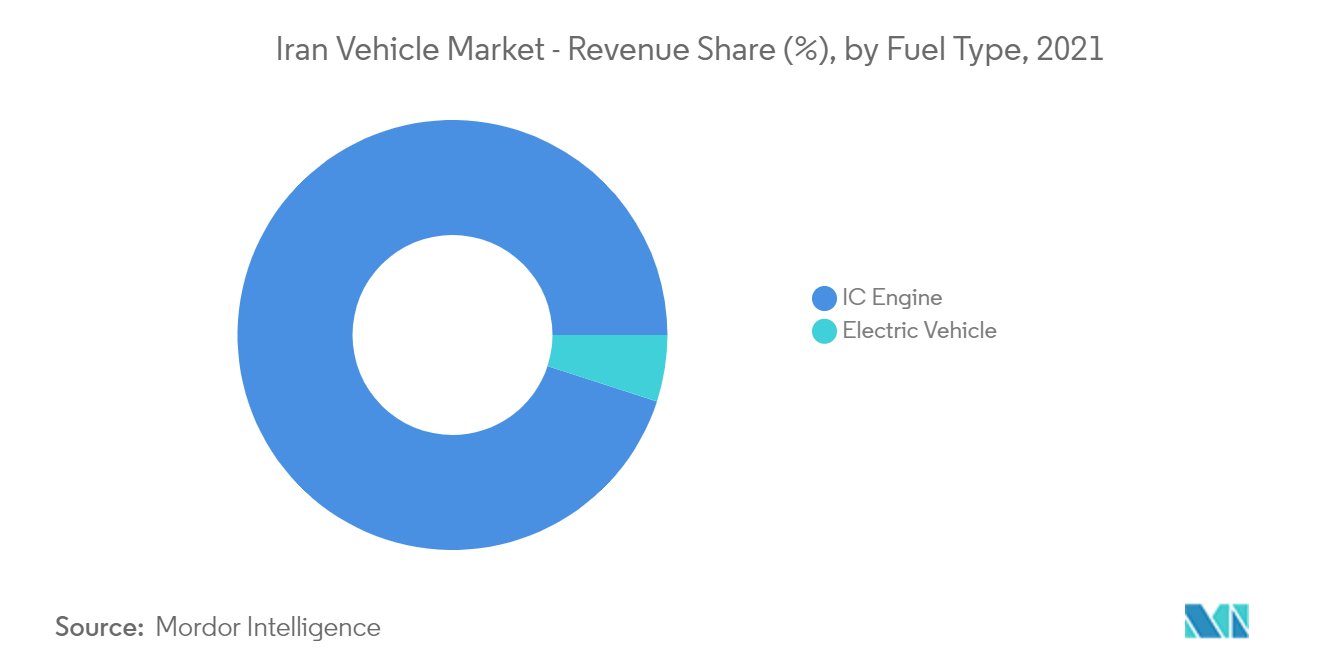Market Trends of Iran Vehicles Industry
This section covers the major market trends shaping the Iran Vehicles Market according to our research experts:
Passenger Car Segment to Witness Highest Growth
The passenger cars segment holds the largest market share in the Iranian automotive industry. The international sanctions have had a tremendous impact on the industrial development of many industries in the country. Iran, which is the largest automotive market in the Middle East with a market of nearly one-third of the German automotive market, has seen volatility in the automotive industry with the implementation of the sanctions.
Iranian car manufacturers alone accounted for around 2.2% of the country's overall economic growth. The automotive industry is projected to form at least 4% of Iran's economic growth by 2025. In addition, Iran's car production during 2021 has even surpassed many industrialized countries including Italy with 795,000 units, Poland with 439,000 units, South Africa with 499,000 units, Portugal with 289,000 units, Belgium with 261,000 units, Taiwan with 265,000 units, Austria with 136,000 units, Egypt with 23,000 units and Finland with 93,000 units. This makes the Iran automotive sector the most potential hotspot for car manufacturing during the coming years.
The Iranian car manufacturers have re-established their cooperation with European companies, such as Peugeot, Citroen, and Renault. As a result, the automotive industry has grown immensely over the years. On average domestic manufactured car costs USD 2500 whereas the imported car is being sold for almost 8000 USD, which is giving a competitive advantage to the domestic market. The Iranian government is considering increasing import taxes to 70% from the already high 40% to encourage domestic production.
The sanctions concluded by Iran government has helped the domestic companies, such as IKCO and SAIPA, to emerge in the market, which have a major share of the passenger vehicle sales in the country. In addition, Iran government and OEM are expected to play most pivot role in driving the Iran passenger car segment in coming years. For instance, In July 2022, Iran, Turkey and Russia came under the joint car design and manufacturing. This tripartite cooperation would develop mutual growth vision for all three counties to robust the automotive car production in the countries.
Considering these factors and development, demand for passenger car is expected to witness high growth rate during the forecast period in Iran.

Electric Vehicles to Gain Traction in Coming Year
In context to zero carbon emission technologies, alternative fuel vehicles (AFV) offer significant energy sustainable transportation and came up as a potential innovation to address the issue. Hybrid electric vehicle (HEV), plug-in electric vehicle (PHEV), and battery electric vehicle (BEV) are the most common type of alternative fuel vehicles which either uses less or no fossil fuel.
Shifting customer preference towards electric vehicles is an evident sign for future decarbonization and simultaneously decisive for charging stations, although penetration of EVs is subjected to various attributes, including consumer behavior, infrastructure, and certain regional clusters. An increase in electric vehicle sales will proportionally fuel the demand for charging stations. Prominent players in the market have diagnosed the pinpoint of consumer sentiment and thus are focusing on catering to it by offering fast charging technologies across the country.
Eventually, the Iranian automotive industry became self-reliant and self-sufficient to supply for the demand within the country. The country had reached the potential to roll out electric vehicles. For instance:
- In March 2022, Iranian automotive manufacturer KSJ Motors introduced an all-electric car named Oxygen in the Iran auto market. The company has offered these two passengers' all-electric vehicles at USD 10, 500 and further plans to produce 1,000 more units in the coming nine months tenure. The vehicle's energy consumption will be even less than 15 kilowatt hours (kWh) for every 100 kilometres with the vehicles a combined range of around 220 km per charge. Moreover, according to company's sources, KSJ Motors had sourced only 20% of vehicle parts needed for making the car outside of the Iran.
- In March 2022, Iran Khodro's hybrid bus named as E-Atros was announced in the market. The newly offered bus is 12-meter in length and is suitable for inner-city use. In addition, the bus is powered with 350 kWh battery producing 470 horsepower and 3500 Nm torque.
Considering these factors and development, demand for electric vehicles is expected to penetrate the Iran's automotive sector in the forecast period.

